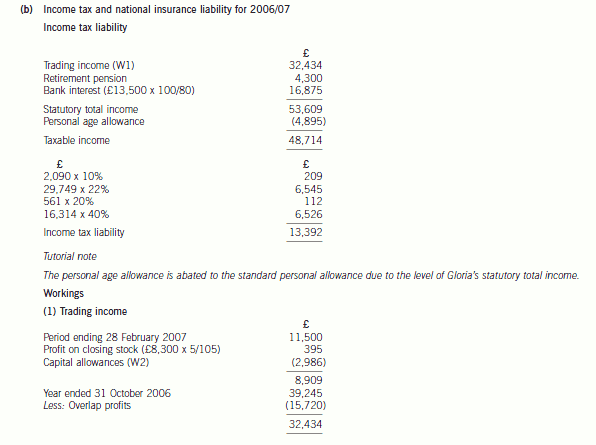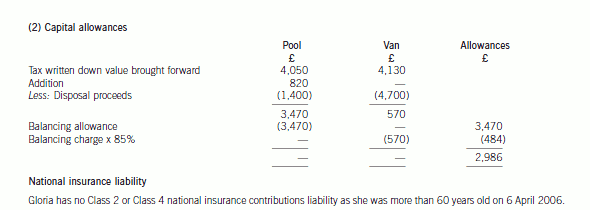2020年ACCA考试F4科目考点清单
发布时间:2020-03-13
F4科目仍然属于基础科目范畴,其课程名称为Corporate and Business Law,即公司法与商法。因此,F4科目主要是考查法律方面的知识。那么,这一科目又有哪些考点呢?下面,51题库考试学习网为大家带来ACCA考试中F4科目考点的相关信息,以供参考。
从内容上看,F4科目主要难点在于英美法系和大陆体系的不同,即英美法系使用的是判例法,因此F4中涉及到不同年代各种法律案例,并且有很多专业词汇。这些专业词汇是考生需要掌握的,如果拼写错误是会被扣分的。当然了,这门考试科目的难度也并不算大,以判例法为主,考试难度感觉是在上升,但是通过率在上升。小伙伴们在备考时不用给自己太大压力,认真备考即可。
以上就是关于ACCA考试中F4科目考点的相关情况。51题库考试学习网提醒:这一科目主要的难点就在于专业词汇,小伙伴们在备考时最好留出时间,用于记忆这些知识点。最后,51题库考试学习网预祝准备参加2020年ACCA考试的小伙伴都能顺利通过。
下面小编为大家准备了 ACCA考试 的相关考题,供大家学习参考。
Explain the grounds upon which a person may be disqualified under the Company Directors Disqualification Act 1986.(10 marks)
The Company Directors Disqualification Act (CDDA) 1986 was introduced to control individuals who persistently abused the various privileges that accompany incorporation, most particularly the privilege of limited liability. The Act applies to more than just directors and the court may make an order preventing any person (without leave of the court) from being:
(i) a director of a company;
(ii) a liquidator or administrator of a company;
(iii) a receiver or manager of a company’s property; or
(iv) in any way, whether directly or indirectly, concerned with or taking part in the promotion, formation or management of a company.
The CDDA 1986 identifies three distinct categories of conduct, which may, and in some circumstances must, lead the court to disqualify certain persons from being involved in the management of companies.
(a) General misconduct in connection with companies
This first category involves the following:
(i) A conviction for an indictable offence in connection with the promotion, formation, management or liquidation of a company or with the receivership or management of a company’s property (s.2 of the CDDA 1986). The maximum period for disqualification under s.2 is five years where the order is made by a court of summary jurisdiction, and 15 years in any other case.
(ii) Persistent breaches of companies legislation in relation to provisions which require any return, account or other document to be filed with, or notice of any matter to be given to, the registrar (s.3 of the CDDA 1986). Section 3 provides that a person is conclusively proved to be persistently in default where it is shown that, in the five years ending with the date of the application, he has been adjudged guilty of three or more defaults (s.3(2) of the CDDA 1986). This is without prejudice to proof of persistent default in any other manner. The maximum period of disqualification under this section is five years.
(iii) Fraud in connection with winding up (s.4 of the CDDA 1986). A court may make a disqualification order if, in the course of the winding up of a company, it appears that a person:
(1) has been guilty of an offence for which he is liable under s.993 of the CA 2006, that is, that he has knowingly been a party to the carrying on of the business of the company either with the intention of defrauding the company’s creditors or any other person or for any other fraudulent purpose; or
(2) has otherwise been guilty, while an officer or liquidator of the company or receiver or manager of the property of the company, of any fraud in relation to the company or of any breach of his duty as such officer, liquidator, receiver or manager (s.4(1)(b) of the CDDA 1986).
The maximum period of disqualification under this category is 15 years.(b) Disqualification for unfitness
The second category covers:
(i) disqualification of directors of companies which have become insolvent, who are found by the court to be unfit to be directors (s.6 of the CDDA 1986). Under s. 6, the minimum period of disqualification is two years, up to a maximum of 15 years;
(ii) disqualification after investigation of a company under Pt XIV of the CA 1985 (it should be noted that this part of the previous Act still sets out the procedures for company investigations) (s.8 of the CDDA 1986). Once again, the maximum period of disqualification is 15 years.
Schedule 1 to the CDDA 1986 sets out certain particulars to which the court is to have regard in deciding whether a person’s conduct as a director makes them unfit to be concerned in the management of a company. In addition, the courts have given indications as to what sort of behaviour will render a person liable to be considered unfit to act as a company director. Thus, in Re Lo-Line Electric Motors Ltd (1988), it was stated that:
‘Ordinary commercial misjudgment is in itself not sufficient to justify disqualification. In the normal case, the conduct complained of must display a lack of commercial probity, although . . . in an extreme case of gross negligence or total incompetence, disqualification could be appropriate.’
(c) Other cases for disqualification
This third category relates to:
(i) participation in fraudulent or wrongful trading under s.213 of the Insolvency Act (IA)1986 (s.10 of the CDDA 1986);
(ii) undischarged bankrupts acting as directors (s.11 of the CDDA 1986); and
(iii) failure to pay under a county court administration order (s.12 of the CDDA 1986).
For the purposes of most of the CDDA 1986, the court has discretion to make a disqualification order. Where, however, a person has been found to be an unfit director of an insolvent company, the court has a duty to make a disqualification order (s.6 of the CDDA 1986). Anyone who acts in contravention of a disqualification order is liable:
(i) to imprisonment for up to two years and/or a fine, on conviction on indictment; or
(ii) to imprisonment for up to six months and/or a fine not exceeding the statutory maximum, on conviction summarily (s.13 of the CDDA 1986).
(b) Compute Gloria’s total income tax and national insurance liability for 2006/07. (7 marks)


(b) Discuss ways in which the traditional budgeting process may be seen as a barrier to the achievement of the
aims of EACH of the following models for the implementation of strategic change:
(i) benchmarking;
(ii) balanced scorecard; and
(iii) activity-based models. (12 marks)
(b) Benchmarking
Benchmarks enable goals to be set that may be based on either external measures of ‘best practice’ organisations or internal
cross-functional comparisons which exhibit ‘best practice’. A primary aim of the traditional budgeting process is the setting of
realistic targets that can be achieved within the budget period. The setting of realistic targets means that the extent of
underperformance against ‘best practice’ standards loses visibility, and thus short-term financial targets remain the
predominant focus of the traditional budgeting process. It is arguable that because the budgetary reporting system purports
to give managers ‘control’, there is very little real incentive to seek out benchmarks which may be used to raise budgeted
performance targets. Much depends upon the prevailing organisational culture since benchmarking may be viewed as an
attempt by top management to impose impossible targets upon operational managers. The situation is further exacerbated
where organisations do not measure their success relative to their competition.
Balanced scorecard
The Balanced scorecard is often misunderstood as a consequence of the failure by top management to ensure that it is
implemented effectively within the organisation. Thus it may be viewed as the addition of a few non-financial measures to
the conventional budget. In an attempt to overcome this misperception many management teams now establish a
performance-rewards linkage based upon the achievement of Scorecard targets for the forthcoming budget period.
Unfortunately this can precipitate dysfunctional behaviour at every level within the organisation.
Even in situations where the Scorecard has been well-designed and well-implemented it is difficult for it to gain widespread
acceptance. This is because all too often there exists a culture which places a very high value upon the achievement of the
fixed annual targets in order to avoid the loss of status, recognition and rewards.
A well-constructed Scorecard contains a mix of long-term and short-term measures and therefore drives the company in the
direction of medium-term strategic goals which are supported by cross-functional initiatives. On the other hand, the budgeting
process focuses the organisation on the achievement of short-term financial goals supported by the initiatives of individual
departments. Budgets can also act as an impediment to the acceptance of responsibility by local managers for the
achievement of the Scorecard targets. This is often the case in situations where a continued emphasis exists on meeting shortterm
e.g. quarterly targets.
Activity-based models
Traditional budgets show the costs of functions and departments (e.g. staff costs and establishment costs) instead of the costs
of those activities that are performed by people (e.g. receipt of goods inwards, processing and dispatch of orders etc). Thus
managers have no visibility of the real ‘cost drivers’ of their business. In addition, it is probable that a traditional budget
contains a significant amount of non-value-added costs that are not visible to the managers. The annual budget also tends
to fix capacity for the forthcoming budget period thereby undermining the potential of Activity-based management (ABM)
analysis to determine required capacity from a customer demand perspective. Those experienced in the use of ABM
techniques are used to dealing with such problems, however their tasks would be much easier to perform. and their results
made more reliable if these problems were removed.
声明:本文内容由互联网用户自发贡献自行上传,本网站不拥有所有权,未作人工编辑处理,也不承担相关法律责任。如果您发现有涉嫌版权的内容,欢迎发送邮件至:contact@51tk.com 进行举报,并提供相关证据,工作人员会在5个工作日内联系你,一经查实,本站将立刻删除涉嫌侵权内容。
- 2019-01-05
- 2020-05-20
- 2020-02-03
- 2021-05-12
- 2019-07-19
- 2019-07-19
- 2019-07-19
- 2020-03-13
- 2020-08-07
- 2019-07-19
- 2020-03-01
- 2020-04-16
- 2019-07-19
- 2020-01-01
- 2020-03-13
- 2020-02-21
- 2020-03-13
- 2020-05-16
- 2020-03-13
- 2020-08-08
- 2019-01-05
- 2019-07-19
- 2020-01-03
- 2020-03-13
- 2021-06-19
- 2020-03-13
- 2021-05-02
- 2020-03-05
- 2019-07-19
- 2019-07-19